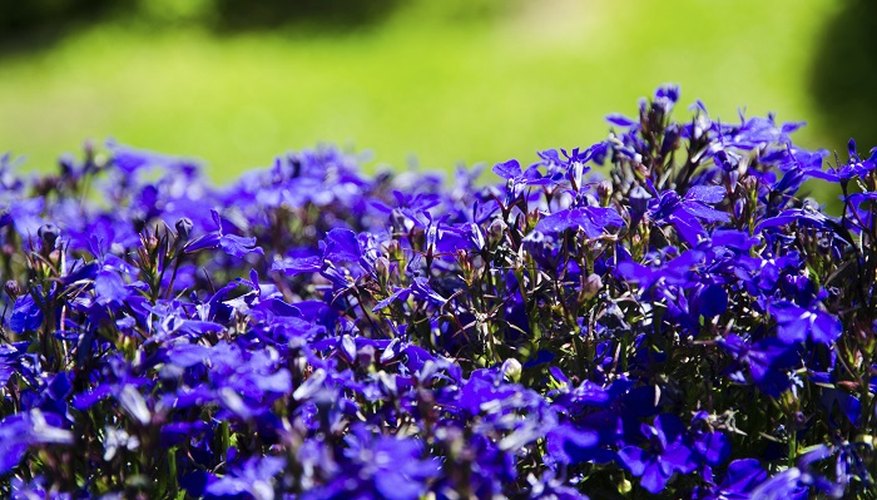Lobelia -- also known as the Cambridge Blue -- is an annual plant that produces delicate blossoms in shades of blue, white, pink or purple. Commonly grown as a ground cover or a hanging plant, lobelia requires well-drained soil and full sunlight to partial shade. Cutting back a lobelia plant will increase the blooming season and increase the number of new blossoms.
Pinch back the tips of the young lobelia plants when you purchase them from the garden centre. Without this initial pinching, the stems can grow long and make the plant look leggy and unkempt. Use your fingertips or a pair of sharp pruning shears to remove just the outside tip of each stem.
- Lobelia -- also known as the Cambridge Blue -- is an annual plant that produces delicate blossoms in shades of blue, white, pink or purple.
- Without this initial pinching, the stems can grow long and make the plant look leggy and unkempt.
Water the lobelia to keep the soil slightly moist at the depths of the roots. Allow the surface of the soil to dry out slightly between watering sessions. Although lobelia can withstand a range of soil conditions, this plant grows best in slightly damp soil, especially during the intense heat of summer.
Examine your lobelias throughout the growing season. Keep the plant shape attractive and uniform by trimming back any long stems that grow beyond the average length of the main foliage. Look for any dried-out or broken stems. Minimise the risk of disease and enhance the appearance of a lobelia plant by trimming off the damaged growth as soon as it appears. Dip your pruning shears in a disinfectant solution that contains nine parts water to one part chlorine bleach, to avoid spreading bacteria or fungus spores between plants.
Cut back the entire plant after the initial wave of blossoms begins to fade. Using your pruning shears, cleanly remove the top half of the entire plant. This heavy pruning early in the summer will encourage the start of another flowering session. Water lobelia plants deeply after heavy pruning to reduce plant shock.
- Examine your lobelias throughout the growing season.
- Using your pruning shears, cleanly remove the top half of the entire plant.
Remove the cut vegetation from the soil surrounding the lobelia plant. Leaving the dead material in the area increases the risk of both pests and disease conditions. Watch for the second flowering session to start within three to four weeks. Continue to check the lobelia plant regularly and trim back any dead, dried or leggy stems.
TIP
Save the seeds from spent flowers to grow new lobelia plants the following year. These seeds require an early start indoors of up to 10 weeks.
WARNING
Grow your lobelia in an area that provides some afternoon shade.
